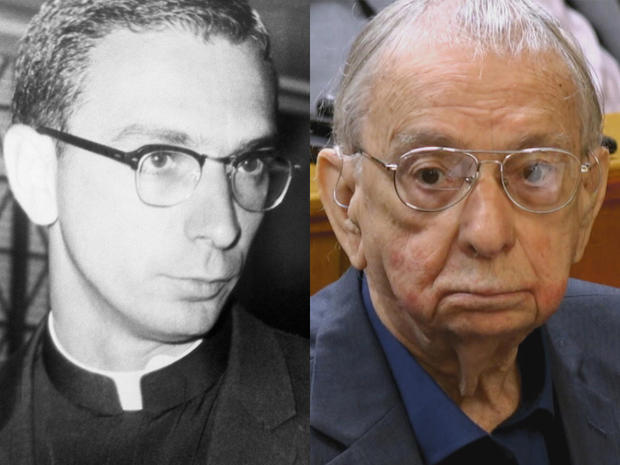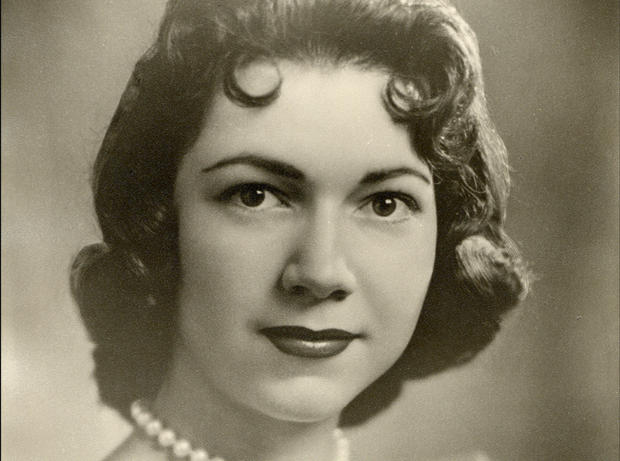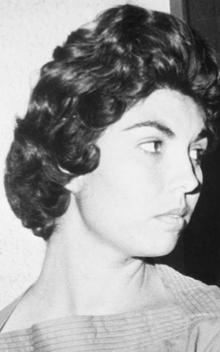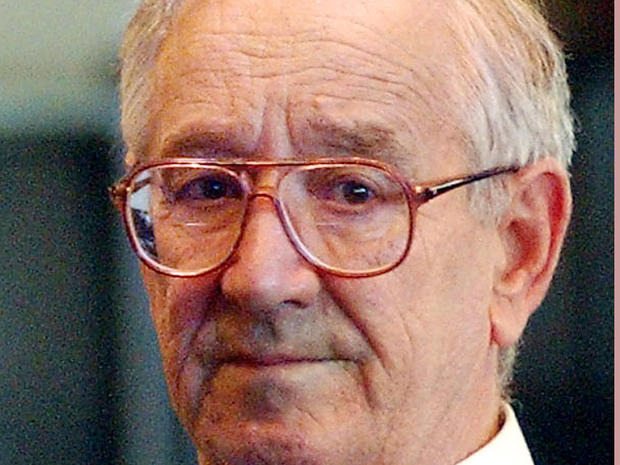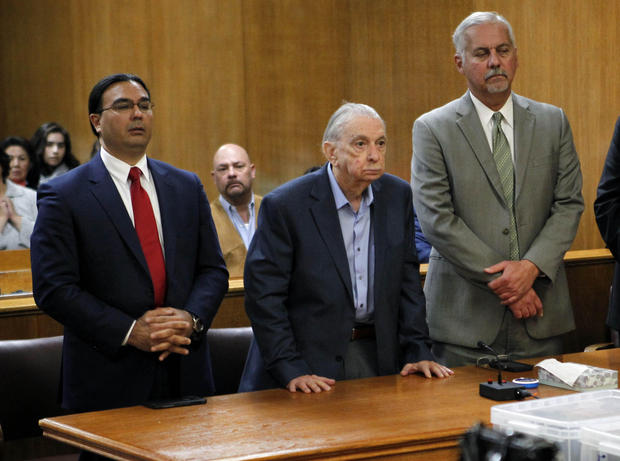Church Officials Shielded Priest Suspected of Murder for Decades
By Josh Gaynor
"The institution who is in the business of seeking salvation for others was complicit in covering up this murder," Garza said in court. So what happened to Father John Feit in the nearly six decades between the murder and his conviction for the crime? A "48 Hours" investigation tracked Feit's path from that April day in 1960 when Irene Garza was found floating in a Texas canal, to the February afternoon nearly 56 years later when Feit was presented with a warrant for his arrest. Feit, convicted for attacking one young woman and suspected of killing another was shuttled across the country, shielded from justice, and allowed to rise to a position of authority, overseeing troubled priests who were released to the general public, including one of the worst sexual offenders in the modern history of the Catholic Church. This account is based on dozens of interviews and hundreds of pages of public records and documents obtained by "48 Hours." THE LETTER On the evening of April 16, 1960, John Feit, a young visiting priest from Chicago, took Irene Garza's confession at the rectory of the Sacred Heart Church in McAllen, Texas. It was a busy Holy Saturday ahead of Easter. Garza was never seen alive again. Father Feit was immediately a person of interest. At that time he was also the primary suspect in another case. A 20-year-old woman, Maria America Guerra, was violently attacked from behind in a neighboring church just weeks earlier.
She would soon identify Father Feit as the perpetrator. The heat on Feit was intense, and it appears officials with the Church felt it was time to get him out of Texas. In the lead-up to his 2017 trial for the murder of Irene Garza, prosecutors subpoenaed records from Feit's former religious order, The Missionary Oblates of Mary Immaculate (O.M.I.). Included in that file was a typed letter from Father J.F. Pawlicki to the head of the southern region of the O.M.I.'s, Father Lawrence J. Seidel. It was dated Aug. 1, 1960, just over three months after Irene's body was found. In the letter, never mentioning Feit by name, Father Pawlicki wrote of advice he received from the Sheriff. The letter states, in part: "The prosecution must be made to see just how weak their case is, lest they go off half-cocked, and set the wheels into motion that would bring this out in public print, and give the opponents of the Church a field day. "…after three or four months, or even less if possible, have this young man transferred to another part of the country, as a normal obedience. He feels that everyone knows that priests are always being transferred around so this would not be strange. After some time in his new place, a year or two, then have him sent out to a foreign Mission. The reason for the first move is to get him out of the area of suspicion. If something happens, the officers of the area will always be suspicious of him. "The sheriff conlcudes (sic) that the longer time we have, the weaker the case gets…He has much experience in such things and I believe this is extremely wise. He also is a Catholic, and he also stands to lose materially by such a scandal here, in such a non Catholic area." Feit's defense attorney Rene Flores believes the letter does not imply any guilt on the part of his client. "The letter was clear that law enforcement, at the time -- did not believe they had a strong case," he said in an interview with "48 Hours" correspondent Richard Schlesinger. "I think the letter was also clear-- in showing that the church had every intention of fighting the charges." Thomas Doyle has a different interpretation. "In my experience in the thousands of documents I've studied, it's the first time I've seen any organized plan of obfuscation, collusion, and cover-up played out step by step in coordination with the civilian law enforcement." Ordained as a Catholic priest in 1970, Doyle has served as an expert witness in clergy abuse cases around the world, including for the prosecution in Feit's case. During Feit's trial, Doyle testified: "If it became known that this priest had murdered someone, it would be bad publicity for the Church. Where in fact the true scandal, in my professional estimation, is engineering the cover-up, or not allowing or permitting or insisting that this man follow the course of justice. That's the scandal." The letter, Doyle said in an interview with "48 Hours," is also notable for what it's missing: "there's no mention of Irene Garza, her family, in this letter or any documentation I saw. All they were concerned about was covering it up." Regardless of which interpretation is to be believed, Feit was soon on the move and out of Texas. THE TRANSFERS To understand the meaning behind Feit's subsequent movements through the Church, it's important to understand how the Catholic Church bureaucracy works. "When a priest gets into trouble then the moving begins," said Terry McKiernan, the founder of Bishop Accountability, an archive and research organization specializing in monitoring abuse within the Catholic Church. "Some people call it the 'geographic solution,' it was for many years the standard way for abuse allegations to be handled." "As a priest, you don't just show up somewhere," said Patrick J. Wall, a former priest and victim advocate. "The only way to survive as a young priest or monk is to follow up with what your directions are." The Catholic Church, renowned for its meticulous record keeping, would have a paper trail for every step of the way.
"The Catholic Church is a highly organized, regularized institution," McKiernan said. "Every time a priest is moved there is not only a letter informing of his reassignment, but usually a letter responding back acknowledging he received that letter." On Aug. 6, 1960, less than a week after the letter from Father Pawlicki was written, investigators in Texas issued a warrant for Feit's arrest in connection with the attack of Maria America Guerra. But they had one problem -- they couldn't find him. Feit surrendered a week later. At the time, he said in a statement, "I am innocent of the charge for which I have been indicted … I am not a fugitive, nor have I been a fugitive. I am hiding from nobody … because I have nothing to hide." Feit said he simply checked into an out-of-state hospital because his "nervous system was affected" by the stress surrounding his legal troubles. "I wanted to try and get some rest and peace of mind. I felt that I could not take anymore." Feit would later tell police he also developed a fear of women around that time. Church records show Father John Feit spent approximately two weeks in a church-run medical center in St. Louis in August 1960 called the Alexian Brothers Hospital & Dispensary. "In that era, from the '60s and even before that into the '70s and '80s, when Bishops had bad actors among the priests, including sexual abuse, they would send priests to specialized healthcare facilities," said Thomas Doyle, "in this case Alexian Brothers. They took in priests and promised anonymity." Apparently, the hospital stay did not cure his troubles. There was soon a request by the church to send Feit back to Alexian Brothers once again. In a Sept. 15, 1960 letter, an O.M.I. official, the Very Rev. John A. Hakey, wrote, "We are sincerely grateful for your past gracious handling of our good Fr. Feit, and we assure you that taking him in on the same conditions as previously will in no way jeopardize the good name of your institution or bring it any detrimental publicity." One year later, Father Feit was back in a Texas courtroom to stand trial for the assault and attempted rape of Maria America Guerra. The trial would end in a hung jury. The Alexian Brothers Health System did not respond to a "48 Hours" request for comment. THE MONASTERIES In early February 1962, five months after the Maria America Guerra trial and less than two years after Irene Garza's murder, Father John Feit was dispatched to wintery Dubuque, Iowa, and the New Melleray Abbey, a monastery for Trappist monks. In a Feb. 8, 1962 letter from Feit to Father Seidel, his Provincial Superior with the O.M.I.'s, he wrote, "I am happy to be here, and know in my heart that the atmosphere of peace and quiet will be most conducive to both spititual (sic) growth and rest." At New Melleray, peace and quiet would be in ample supply. The life of a Trappist monk is one of simplicity, devotion, and discipline. Mostly isolated, the monks at New Melleray wake long before dawn, eat twice a day, and spend little time speaking. A perfect place to hide, Thomas Doyle said, with little chance for gossip to spread. "He would be there, have no access to the outside world," Doyle said. "They're like maximum security monasteries, and it was not uncommon if a priest was going to be punished they'd send them there." The other monks would likely have no idea what past issues Feit may have brought with him. In March 1962, a month after his arrival at New Melleray, Feit made a trip back to Hidalgo County, Texas, and the same courtroom where decades later he would be convicted for the murder or Irene Garza. The 1961 trial for the attack on Maria America Guerra ended in a hung jury. Now, prosecutors offered Feit a deal. On March 28 1962, dressed in his black priest habit, Feit pleaded "nolo contendere" to a reduced charge of aggravated assault. The punishment? A $500 fine. Feit's defense team at the time stressed that deal, in essence a "no contest" plea, was not an admission of guilt. But the plea is considered a conviction. Darrell Davis was a young TV reporter at the time covering the Maria America Guerra case for local Channel Five News. Davis says he, along with some other journalists, was called to an off-the-record meeting with then District Attorney Robert Lattimore. According to Davis' testimony in court, Lattimore said prosecutors and church officials knew Father Feit killed Irene Garza, but in exchange for a plea in the Maria America Guerra case, he would not be prosecuted for Irene's murder. "He said verbatim, 'we know that Father Feit killed Irene Garza and the church knows that he killed Irene Garza so we have made some arrangements,'" Davis said in an interview with "48 Hours." "He said the Church is going to put him in a monastery…and he will be kept there for the rest of his life." After the plea, John Feit returned to the monastery in Iowa. The Rev. Stephen Verbest, the Vocation Director at New Melleray, has been at the monastery for more than 60 years. He told "48 Hours" he had no memory of Feit being there or records reflecting his stay. Verbest said visiting priests around that time with troubles like alcoholism would sometimes stay for extended periods at the monastery guesthouse where, he said, no records would be kept. It's unclear exactly how long Feit remained at New Melleray, but his writings suggest he was still in Iowa in June of 1962, four months after his arrival. Father Mark A. Scott, the current Abbot at New Melleray, said in an interview with "48 Hours" a stay that long for a visiting priest would be out of the ordinary. "Usually guests stayed for a week," he said. As for the assertion that troubled priests during that time would be placed at monasteries like New Melleray to avoid prosecution, Scott said "I can't speak to that. That was before my era." In a letter typed on New Melleray letterhead on June 19, 1962, Feit reflected on that tumultuous period in his life: "The time has come to make some definite decisions, enabling me to begin a regular and ordered life, with definite goals and a definite aim in life." By the beginning of 1963, the church moved Father Feit again, this time to another Trappist monastery, The Assumption Abbey in Ava, Missouri. "The key element between New Melleray and Assumption is there's no school attached, so no minors," Wall said. "The second most important element about Trappist monasteries, its geographic isolation, especially at that time." It was at Assumption where Feit would meet Dale Tacheny, the man who decades later would play a definitive role in his conviction for the murder of Irene Garza. Tacheny was a young monk serving as Novice Master at the monastery, training new prospective monks. Tacheny says his superior at Assumption told him to counsel Feit, "he said that Father Feit had murdered a young woman, there were no other details given," according to a transcript of a 2002 interview with police. Tacheny says he counseled Feit for more than six months. During that time he says Feit admitted to attacking a young woman following her confession, keeping her captive overnight, and leaving her to suffocate. Feit, he said, told him the woman was eventually dumped in a canal. Tacheny says he never pushed to get the young woman's name. He says Feit also spoke of a proclivity for wanting to attack women from behind, triggered by the sound of their high heels clicking on solid ground. Tacheny would not share his story with police for almost 40 years. "While I knew that Father Feit had committed the murder," Tacheny said in the 2002 police interview, "I felt that my primary function with Father Feit was to see if perhaps, he ultimately might not have a vocation to become a monk in the monastery." A representative for Assumption Abbey had no comment. Tacheny says he finally came forward in 2002 in part to help bring closure to Irene Garza's family. But the local prosecutor in Hidalgo County at the time did not think Tacheny was a reliable witness. At Feit's trial, his defense attorney, Rene Flores, painted Tacheny as a liar who was fed facts by investigators to try and close the case. In an interview with "48 Hours" Flores said, "To sit and believe that Dale Tacheny received this information from John at the time and according to his testimony was not moved in one way or another because he, quote, 'was not there to judge,' to believe that and, then, fast-forward 40-some odd years when he came up and says, 'I was moved because I wanted to bring closure to the family,' we got a word for that in Texas … Bulls---." Tacheny later acknowledged some of the details he presented as fact were actually assumptions based off what he says Feit told him. But prosecutors didn't think the problems Tacheny had with details made him unreliable. "I found him to be truthful, and I saw the different types of evidence that suggested that what he was saying did in fact happen," said prosecutor Mike Garza. "I thought when he looked, would look at a jury in the eye that they would be able to tell he was telling the truth, and I had the backup to corroborate it." HIGHER LEARNING The monastic life, it turned out, was not suited to Father John Feit. By late 1963, Tacheny said he and his superior at the Assumption Abbey determined it was "safe for Father Feit to go back into the world." Feit, already convicted for assaulting Maria America Guerra, suspected of murdering Irene Garza, and allegedly expressing urges to attack young women, was moved again. This time to a college campus. He was enrolled as a graduate student in philosophy at Loyola College, a Jesuit school in his hometown of Chicago. "It's pretty common, you can't put him back in a parish, so they stuck him in a school," said the former priest Patrick J. Wall. Feit attended Loyola for only one semester, from September 1963 into January of 1964, according to a spokesperson with the school. That semester, a seismic event shook the nation and apparently John Feit to his core. On Nov. 22, 1963, the country's most famous Catholic, President John F. Kennedy, was assassinated. Father John Feit left school soon after. He never finished his degree. ROAD TO HEAVEN By the end of 1964, more than four years after Irene Garza's murder, Father John Feit made what was perhaps his most consequential move since leaving Texas. He headed west to Jemez Springs, New Mexico, to a facility run by a Roman Catholic religious order called The Servants of the Paraclete. Founded in 1947 by Father Gerald Fitzgerald, it was a monastery for troubled priests. Father Fitzgerald's early visitors came with a variety of issues, from substance abuse to sexual abuse. "Soon after, he was overloaded with priests who had sexual problems," said A.W. Richard Sipe, a former Benedictine monk and priest and an expert in the sexual abuse behavior of priests, "little by little it bubbled up that children were involved." Sipe also testified for the prosecution in Feit's case. In a 1965 interview with Pulitzer Prize-winning reporter Sanche de Gramont for the Saturday Evening Post, Father Fitzgerald said of the Paracletes, "We're shepherding the shepherds, we gather up the fragments. Our cure is simple, it's based on the sovereignty of love." Patrick J. Wall describes the facility at Jemez Springs during that time differently. He says it was a place of last resort for some of the Church's most troubled priests, "sometimes I refer to it as a Supermax because there's really nowhere else to go if you want to stay in the Church." John Feit spent seven years at Jemez Springs and eventually joined The Servants of the Paraclete. He operated out of the main house at the facility called Via Coeli -- a Latin phrase meaning "Road" or "Way" "To Heaven" By late 1968, Feit had risen to a position of "Superior" at Via Coeli, supervising around that time more than 80 priests. One of those was a young priest from Massachusetts named James Porter. Porter arrived at Jemez Springs in 1967 following multiple complaints of abuse of children in Massachusetts. "Porter was one of the most dangerous and depraved sexually offensive priests ever," said Mike Reck, an attorney representing more than a dozen of Porter's victims and a colleague of Patrick J. Wall.
"The reality that Fr. Feit, himself a criminal, was placed in a position of power, supervision and direction of other criminal priests is a public safety nightmare," said Reck. Feit says he worked with Porter for a year and half, sometimes releasing him on temporary assignments to churches in need of staffing, including to at least four locations around New Mexico as well as in Texas. "He has been a very active young priest," Feit wrote in an Aug. 6, 1969, letter updating Porter's home diocese in Fall River, Mass., of his progress. "We receive a large number of requests for supply work during the summer, and I have not hesitated to call upon Fr. Porter in each of these instances." Feit also dispatched Porter to a Paraclete facility in Nevis, Minnesota, where he worked at a neighboring parish: "he is a willing worker, and gets along well with pastors and people wherever he goes. Thus far there has been no occurrence of the problem which plagued Fr. Porter in the past," Feit wrote. By that time the Paracletes had mental health professionals working with some of the priests. Feit would go on to write: "I wish that all of these favorable circumstances could give me leave to write Porter off as 'cured,' but that is the domain of the professional, not myself." Feit later claimed he was unaware of Porter's abuse of children until Porter already was gone from Jemez Springs. "It's certainly not believable," Thomas Doyle said, "Feit was a superior there, as a superior there he was responsible for where Porter was going. He would have been responsible for knowing what progress Porter made if any." Porter was accused of abusing children on his temporary assignments from Via Coeli and continued his abuse until his arrest more than 20 years later. Porter would plead guilty to molesting 28 children, once telling a reporter he had abused upwards of a 100. His case and subsequent others garnered national headlines. Investigations, including those by the Spotlight team at the Boston Globe exposed widespread sexual abuse within the Catholic Church. In 1993, Porter was sentenced to 18-20 years in a maximum security prison. He died in 2005. "If Fr. Feit had been a moral and ethical human he could have advised the public of Fr. Porter's danger, prevented him from being unleashed on an unsuspecting public, or done anything to curtail Fr. Porter's access to children," Mike Reck said. The extent of the damage inflicted by James Porter may never be fully known. Mitchell Garabedian, portrayed by actor Stanley Tucci in the film "Spotlight", has represented James Porter victims in the past. He now represents four more individuals who have come forward within the last 18 months with allegations of sexual abuse by Porter in Massachusetts between 1958 and 1966, a period before Porter was sent to The Servants of the Paraclete facility in Jemez Springs, New Mexico. One of those alleged victims says he was a 15-year-old altar boy when he met Porter. He says he was sexually abused more than 100 times. "You're dealing with an entity that is self-governing when it comes to disciplining its' own pedophile priests," Garabedian said. "If the Catholic Church was interested in the health, safety and welfare of children they would have dealt with these pedophile priests properly." The Servants of the Paraclete still maintain a facility in New Mexico as well as in St. Louis, Missouri. According to their website, they also have locations in Vietnam, the Philippines, Ghana and Italy. When contacted by "48 Hours," the Very Rev. David T. Fitzgerald, Servant General with The Servants of the Paraclete had no comment. THE LAYMAN In 1971, more than eleven years after Irene Garza's murder, Father Feit requested laicization and dispensation from his obligations as a priest and a member of the Servants of the Paraclete. By 1972 he was former priest John Bernard Feit. He married a young woman he met in New Mexico and started a family. He then proceeded on a path through multiple jobs including as an insurance salesman. He moved to several cities in the Midwest before settling in the Phoenix area in 1979 where his older brother Matthias was living and working as a priest. For more than 20 years, John Feit lived in Arizona, raised his family and became a grandfather. He found work at the St. Vincent de Paul Catholic food bank. "He was extraordinarily kind, caring, compassionate," the agency's Executive Director Stephen Zabilski told "48 Hours" in a 2016 interview, "He was viewed as really someone who had a genuine love, a great love for those less fortunate, the poor in our community." It was not until 2002, 42 years after Irene Garza's murder, that then ex-monk Dale Tacheny came forward to police with the information he says Feit told him so many years earlier. It took another 14 years, in 2016, before John Bernard Feit walked into the Maricopa County Sheriff's Office to sit alongside Texas Ranger Villarreal and Investigator Trevino. FINAL CHAPTER Inside a South Texas courtroom on Dec. 8, 2017, former priest John Bernard Feit was sentenced to life in prison for the murder of Irene Garza. He is now an inmate at the Texas Department of Criminal Justice prison for men in Huntsville, Texas.
Feit is eligible for parole in 2028 at the age of 95. His defense attorney Rene Flores is appealing the conviction. None of Feit's family attended his trial. His wife declined to provide comment when contacted by "48 Hours." In a brief telephone interview following John Feit's conviction, his 94-year-old brother, Father Matthias Feit said, "Just picture your brother in jail and you'd know how I feel" before hanging up. "48 Hours" contacted The Oblates of Mary Immaculate seeking response to the allegations of a cover-up, details of Father John Feit's movement through the Church following Irene Garza's murder, any specific changes made or internal reviews conducted regarding oversight of O.M.I members, or any message to the Garza family. The Rev. Thomas Coughlin, O.M.I. Assistant to the Provincial Superior, said in a written statement: "The Oblates of Mary Immaculate respect the judicial process, with which we have fully cooperated. We continue to pray for Irene Garza and her family and for John Feit and his family." Beyond prayers, beyond words, it is the structure of the Church that must change to keep the troubled history of men like John Feit and James Porter from repeating itself according to the former monk and priest A.W. Richard Sipe. "Hypocrisy is the greatest religious sin, it can cover up all sorts of things" he said, "to be religious is to be truthful. Any church who cannot be truthful about themselves have nothing to say."
|
.
Any original material on these pages is copyright © BishopAccountability.org 2004. Reproduce freely with attribution.
